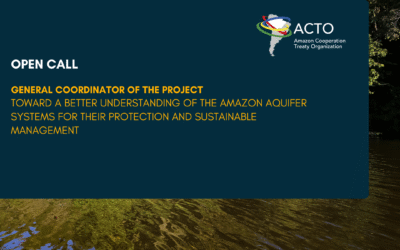This oil is extracted from the Aniba rosiodora species, listed in Appendix II of the Convention on International Trade in Endangered Species of Wild Fauna and Flora (CITES).
The Amazonian native forest species Aniba rosiodora, which is popularly known as rosewood, is under threat of extinction due to intense exploitation over decades. With the inclusion in Appendix II of the CITES in July 2010, the commercialization and export of rosewood oil is now restricted to authorized management areas.
Aniba rosiodora is a large tree, which can reach a height of up to 30 m and a diameter of 2 m. It has a straight cylindrical trunk and a brownish-yellow or reddish bark. According to Flora do Brasil[1], the species is native to Brazil, occurring in the states Amazonas, Pará, and Amapá and is distributed in several South American countries: Brazil, Colombia, Ecuador, Guyana, Peru, Suriname and Venezuela as well as in French Guiana.
It produces an essential oil with high added value and is highly demanded by the perfume and cosmetics industries for its unique aroma. The chemical constitution of the oil is rich in linalool, an important compound with fixative power, but its whole chemical profile gives the oil its unique aroma.
Different factors are involved in the quality of the oil. Oil adulteration is the industry’s highest concern. Adulteration may occur in several ways, such as mixing of the real oil with other essential oils (natural or synthetic), an addition of non-volatile and volatile plant products, or even a substitution of the original plant by other plants during the extraction phase. As the main marketed product is the essential oil, developing effective analytical methods for identification and determination of purity and authenticity is required to ensure product quality.
A novel method for essential oil authentication was developed by direct and rapid analysis using near infrared spectroscopy (NIRS) and data driven independent modeling of class analogy (SIMCA).
Researchers from the Forest Products Laboratory of the Brazilian Forest Service (LPF/SFB), the Institute of Chemistry at UnB, the National Institute for Amazon Research (INPA) and Universidade Paulista (UNIP) published the results of the research in the Microchemical Journal, under the title: A green and direct method for authentication of rosewood essential oil by handheld NIRS and one-class classification modeling, to be released on demand by the authors.
There were 130 samples collected in different Brazilian states, including industries, small cooperatives, local producers, and commercial products purchased over the internet. The NIRS spectroscopy analysis was coupled with mass spectrometry (GC-MS) analysis of the samples to certify their purity and authenticity. The GC-MS analysis, despite its efficiency, is not available for most cooperatives and small producers and does not allow on-site measurements. On the other hand, NIRS can perform fast, direct, low-cost, and non-destructive analysis using portable equipment.
NIRS measurements were performed without any sample treatment. Representative sampling revealed significant variation among samples declared as rosewood oil in the Brazilian market. This method proved 98% efficiency in the analysis of authentic and commercial samples from different origins, indicating that it can be an alternative for export authentication and quality control purposes.
Studies for a method to analyze rosewood oil using the Near Infrared Spectroscopy technique were requested from Brazil by the Convention on International Trade in Endangered Species of Wild Fauna and Flora (CITES) and were partially supported by the Bioamazon Project of ACTO.
Today, rosewood oil is sustainably produced in Brazil. The Aniba rosiodora species has been cultivated and is now grown by mills and small producers in the Amazon. The oil, which in the past was extracted from the trunk requiring the felling of the tree, is now extracted from the leaves and branches. The communities and producers are also replanting the species. More details are available in the video about the research at https://youtu.be/hAN82W-AXiE
Published in the Bioamazon Newsletter, issue n. 17, September-October 2022.
==================================================================
[1] https://floradobrasil.jbrj.gov.br/FB78444











